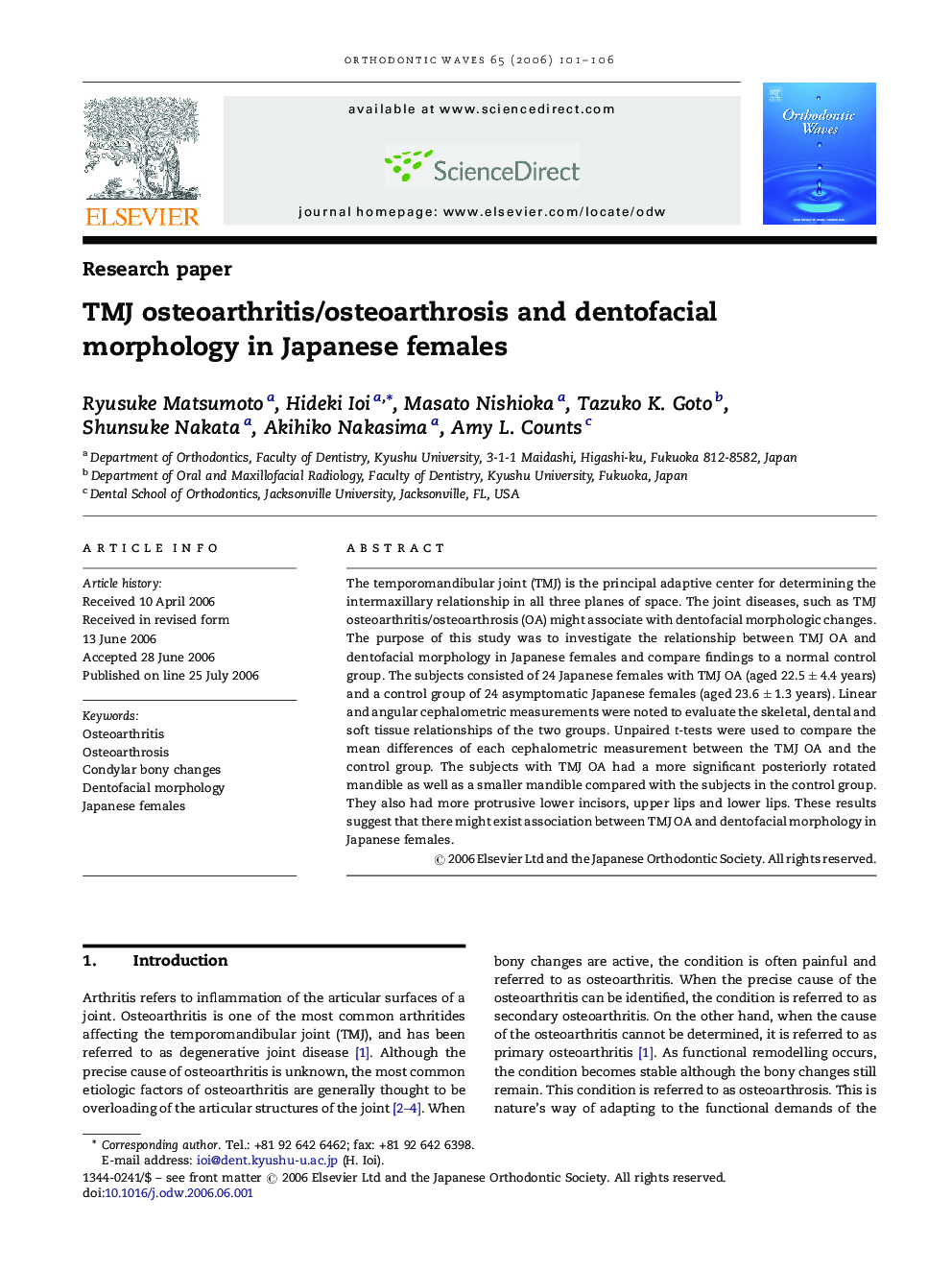| Article ID | Journal | Published Year | Pages | File Type |
|---|---|---|---|---|
| 3170637 | Orthodontic Waves | 2006 | 6 Pages |
The temporomandibular joint (TMJ) is the principal adaptive center for determining the intermaxillary relationship in all three planes of space. The joint diseases, such as TMJ osteoarthritis/osteoarthrosis (OA) might associate with dentofacial morphologic changes. The purpose of this study was to investigate the relationship between TMJ OA and dentofacial morphology in Japanese females and compare findings to a normal control group. The subjects consisted of 24 Japanese females with TMJ OA (aged 22.5 ± 4.4 years) and a control group of 24 asymptomatic Japanese females (aged 23.6 ± 1.3 years). Linear and angular cephalometric measurements were noted to evaluate the skeletal, dental and soft tissue relationships of the two groups. Unpaired t-tests were used to compare the mean differences of each cephalometric measurement between the TMJ OA and the control group. The subjects with TMJ OA had a more significant posteriorly rotated mandible as well as a smaller mandible compared with the subjects in the control group. They also had more protrusive lower incisors, upper lips and lower lips. These results suggest that there might exist association between TMJ OA and dentofacial morphology in Japanese females.
